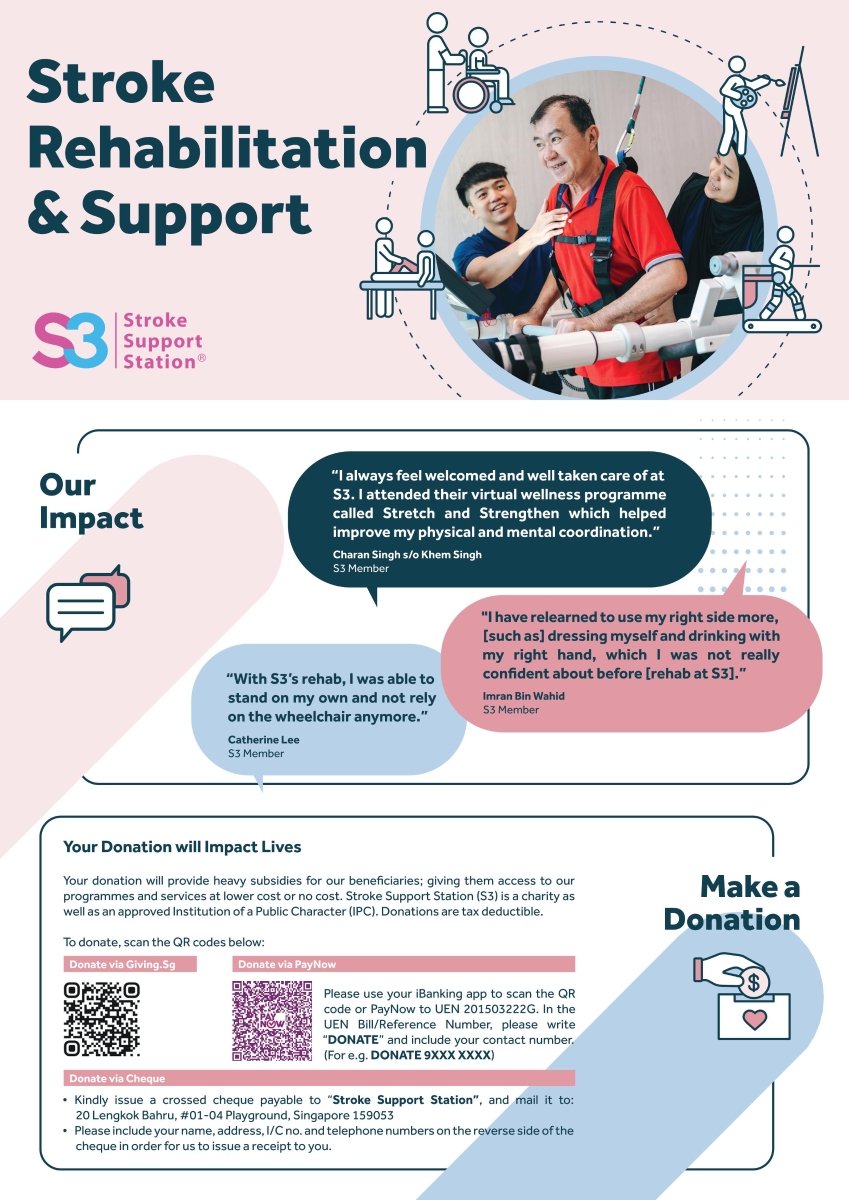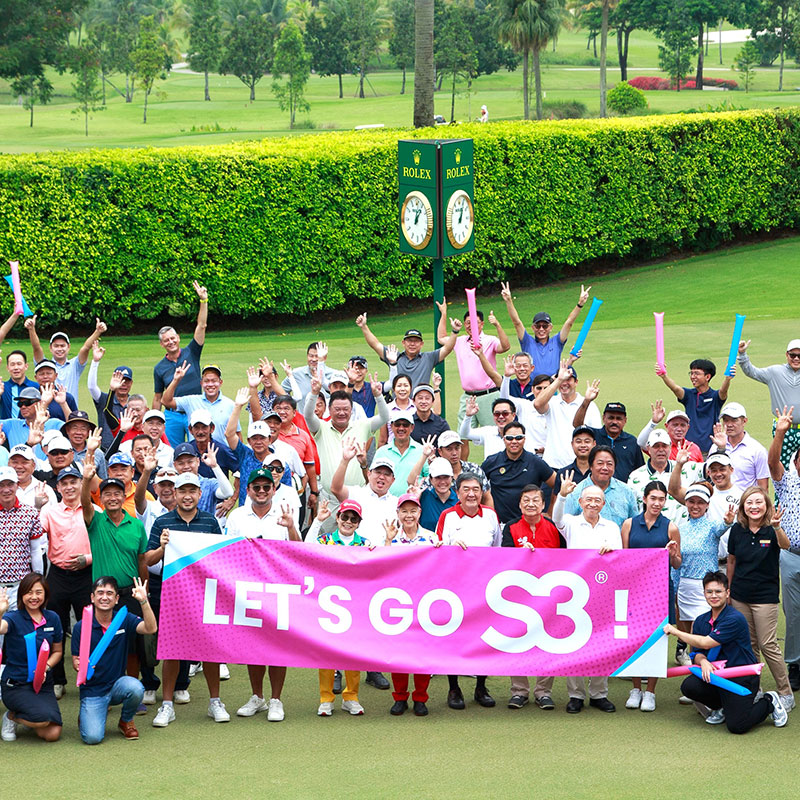News
Ms Tan Tai Meng (not her real name) was an avid trekker who pushed the limits of her fitness. Hit by a stroke in 2018, Ms Tan had to scale back on her fitness regime. However, she still strove to achieve her best targets and goals in life. Here's Ms Tan's story:
What happened when you suffered a stroke?
I was on a holiday in Malta in 2018. While I was walking, I suddenly felt a bursting sharp pain in my torso area. I was admitted into the hospital and diagnosed with aorta dissection. My family members were frantically searching for information about this condition. My condition caused a blood clot in my spinal cord.
After my operation, I was in the Intensive Care Unit for about 5 weeks. I suffered from constant hallucinations. I also experienced pain in my ribcage and the left side of my body was affected. My legs weakened and I had incontinence and bowel issues. I could not move at all, not even my toes. The healthcare workers need to use a net-like equipment to transfer me from my bed to the chair. Even now, I still suffered nerve pain.

How did a stroke transform your life?
I used to be able to do strenuous activities like swimming and participating in the MacLeHose trek in Hongkong which spans 100km. I took 5 days to complete the trail. It would be difficult for me to even attempt it now.
After my recovery, I took 2 hours to complete the Mount Faber trail. I used to be able to do it within 45 minutes. Stroke really took a toll on my body. However, I was happy to be able to make a huge progress in my fitness journey.
How did your loved ones (family and friends) support you in your stroke recovery journey?
My stroke led my brother-in-law to read up more about my condition so that he could help me as much as possible. My sister and himself accompanied me to my medical appointments.
My family and friends were concerned about my goal to return to work. They always reminded me to take it easy.
.jpg)
How had S3’s programmes influence your recovery?
Edmund, a fellow stroke survivor recommended me to S3. I was happy that friends like Edmund were looking out for me.
When I underwent my first assessment in S3, the rehabilitation trainers really understood what I wanted. They asked me questions about my work and why I wanted to continue to work. I answered that it was because I loved my job. S3’s client-focused and empathetic approach helped me to discover and reaffirmed myself.
S3 is also very efficient. Just one day after I was connected to S3, I received a call from customer associate Sally who arranged for my assessment with the social workers and therapists. I felt happy as I did not want to delay my therapy. I wanted to continue exercising as soon as possible to recover more effectively.
.jpg)
During the assessment, I was impressed by S3’s social worker Huei Fang who used mind mapping processes to outline my needs, goals and strengths. My occupational therapist was very observant as she could pick up my instability in my lower limbs even though she did not conduct the assessment. I appreciated S3’s goodwill as the assessment was not charged.
Enting and Hema, my therapists, would adjust the aircon temperature for me during the therapy sessions. These little things really made an impact. When I feel comfortable, I can perform better. “How’s your doctor’s appointment and gastric?” My therapists and trainers took the time to chat with me to understand my condition better. Through these conversations, I forged better connections with them. S3’s therapists and trainers accepted us as who we are and possess a human touch.
.jpg)
My occupational therapist in S3 advised me to create a timetable to track my routine and activities. For 21 days, I had to commit myself to doing at least one housework such as folding the clothes. This is because it takes 21 days to form a habit. As I love trekking, my occupational therapist also recommended me to carry a backpack for a certain duration to improve my endurance.
I also attended the Walk-On@S3 programme, which emphasises on the dynamic connections and coordination between the brain and the body. My trainer tweaked the activities for me to improve beyond my plateau. She also knew that I loved trekking so she included an exercise for me to walk up and down the slope.
I make it a point to recommend S3’s enriching services to those who needs them.
How do you strive to get better every day?
I attended conferences and read the newspapers to attain more knowledge. That was how I got to know more about mindfulness sessions. These sessions helped me to calm down, improved my mood and enhanced my self-awareness. I attended crepe paper and decoupage sessions to hone my artistry. As I tried new things, I gained more confidence and became more contented.
I also participated in many activities such as pilates and volunteered with seniors. I volunteered with Brahms centre as a customer service administrator. I went beyond my expectations to help out with the chores. At first, I faced problems to lift and operate the vacuum cleaner. However, I learnt how to do it through practice. I also accompanied the seniors to outings to S.E.A Aquarium and Gardens by the Bay. I helped them to move on their wheelchair and explained the exhibits to them. It was tiring for me to move them up the slopes. However, I managed to do it. I felt very good about my efforts. I had gone through life’s difficulties, so I knew how these seniors were feeling. My stroke made me more empathetic.
How do you motivate yourself to stay active and healthy?
I am motivated by my goal to regain my pre-stroke functions and return to work.
I want to stay active and healthy so that I can help as many people as possible. I have went through many bumps in life and I would love to share my experiences and knowledge to help others overcome their suffering.
By staying healthy and active, I can be a role model for other stroke survivors. When stroke survivors see me, they think that I am fit enough and thus, do not require therapy. However, I believe that there are many areas for me to improve such as my cognitive ability.
Downloads







